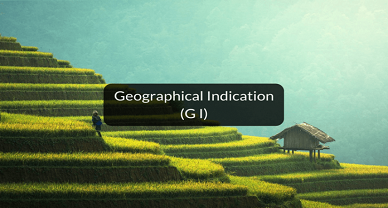Examining the GI Protection of Wines and Spirits
GI protection of wines and spirits originating from a specific region
The wines and spirits industry is one of the most lucrative industries in the world. In 2019, the global luxury wines and spirits market was valued at around $970 billion. Moreover, the industry is anticipated to reach $1,411billion by 2027. Typically, alcoholic beverages are highly valued for the source it originates from. This is primarily because certain regions possess specific climatic patterns and manufacturing methods that are used to facilitate the manufacturing of certain alcoholic beverages. Champagne is one of the most prominent examples of beverages that are known for the region it originates from. Champagne is a sparkling wine that is produced in the Champagne region of France. The Champagne region of France has continued a tradition of sourcing grapes from a particular designated region. Additionally, the region also practices a specific grape-pressing method as well as the secondary fermentation of the wine which is essential to cause carbonation. The uniqueness that Champagne carries has led to its protection as a Geographical Indication (GI). A Geographical Indication refers to a tag or a sign that is used on products or processes that have a particular geographical origin. In order to obtain a GI, it is essential that the product possesses a quality or reputation which solely originates due to a particular region. Since Champagne originates from the Champagne region in France, only labels that are located within 100 miles of this region are permitted to use the tag “Champagne”. Since the year 1967, Champagne enjoys GI protection under the Lisbon Agreement as an “appellations of origin”. Similarly, several alcoholic beverages have been named after their original locations and are often protected as a GI. Other examples include Tequila which has originated from the Tequila town in Mexico and Scotch which has originated from Scotland.
[Image Source: gettyimages]
WTO, TRIPS Agreement, and the protection of wines and spirits
The protection that subsists on wines and spirits is largely regulated by the World Trade Organization Agreement on Trade-Related Aspects of Intellectual Property Rights. While Article 22 of the TRIPS Agreement deals with the protection of Geographical Indications, an additional level of protection is provided specifically to wines and spirits under Article 23. Article 23 of the TRIPS Agreement specifically deals with the protection of wines and spirits. The following are the major provisions that are enlisted under Article 23 with respect to the protection of wines and spirits:
- Firstly, it is imperative that each member shall provide legal means for interested parties who may wish to prevent the usage of a Geographical Indication that attempts to misuse the GI tag for wines that are not originating from a particular place (which is indicated by the GI tag in question). This essentially implies that WTO members must ensure that legal actions are taken in order to ensure that there is no misuse of the GI tag pertaining to a particular wine. Moreover, this would also be applicable in cases wherein the true origin of the beverage is misrepresented or if a GI is used in translations that are accompanied by terms such as “kind”, “type”, “style” or “imitation”.
- Secondly, it has been stated under Article 23 that the registration of a trademark for particular wines or spirits which comprises of a Geographical Indication that identifies certain wines or spirits shall be refused or invalidated, ex officio, if a member’s legislation so permits or at the request of an interested party, pertaining to such wines or spirits not having this origin. This implies that the registration of a particular trademark may be refused if it attempts to identify with certain wines and spirits that do not originate from the region that the GI tag is related to.
- Thirdly, in the case of homonymous Geographical Indications (Indications that sound, spell, or read-alike) for wines, protection shall be granted for each indication, subject to the provisions of paragraph 4 of Article 22. Paragraph 4 of Article 22 states that the protection of Geographical Indications is applicable against a Geographical Indication, although literally true as to the territory or region it originates from, falsely represents that the goods originate from a different territory. Thus, each WTO member shall determine the conditions under which homonymous indications in question will be differentiated from other classes of wines or spirits, taking into consideration the need to warrant the equitable treatment of producers concerned and to ensure that consumers are not misled.
- Lastly, in order to ensure the protection of Geographical Indications for wines, negotiations pertaining to the same shall be carried out in the Council for TRIPS concerning the establishment of a multilateral system as well as the registration of Geographical Indications for wines that are eligible for protection in those WTO members who are participating in the multilateral system.
Rise in foreign and Indian liquor brands registering for GI tags
In the last 10 years, several liquor varieties such as Scotch Whiskey and Napa Valley wines have attempted to procure GI tags of India. However, so far, only two Indian liquor varieties have received a GI tag. Moreover, around 121 foreign liquor brands have submitted their papers before the GI registry of India through the European Commission in order to register their liquor varieties. One of the first foreign liquors to be registered under the GI registry was the Peruvian Pisco, an alcoholic beverage that originates from Peru.
Over the years, Indian liquors have also acquired GI tags. For instance, in 2009, Goa Cashew Feni Distillers and Bottlers Association had registered Feni, an alcoholic beverage that is created by processing cashews. Moreover, Nashik Valley Wine (belonging to Maharashtra) had acquired a GI tag in the year 2010. The Judima rice wine, a popular alcoholic beverage in Assam, is an Indian liquor variety that is pending registration before the GI registry of India. The alcoholic beverages market is expected to exponentially grow in the next couple of years. The granting of GI tags for alcoholic beverages would undoubtedly prove to be greatly beneficial for liquor sales and marketing purposes in the long run. Moreover, granting a GI tag would also help indigenous communities preserve age-old processes that are used to manufacture liquor varieties.
Author: Sanjana, a BBA LLB student of Symbiosis Law School (Hyderabad), in case of any queries please contact/write back to IP And Legal Filings at support@ipandlegalfilings.com.



